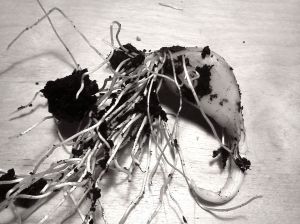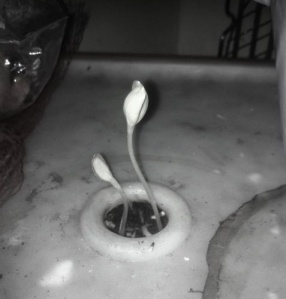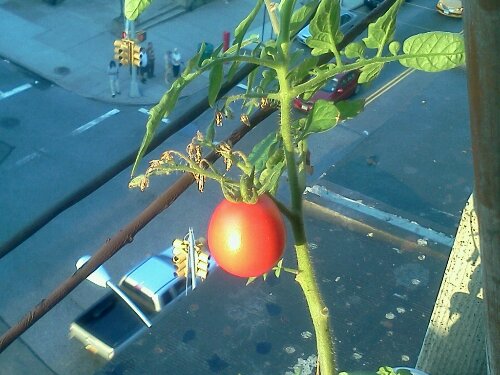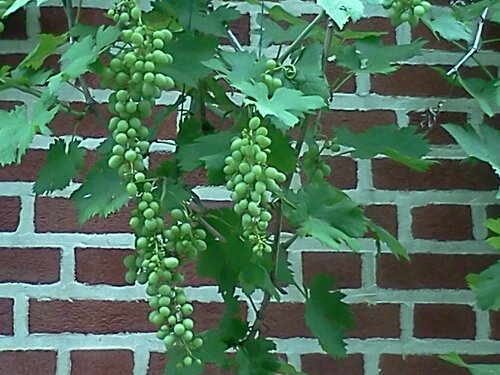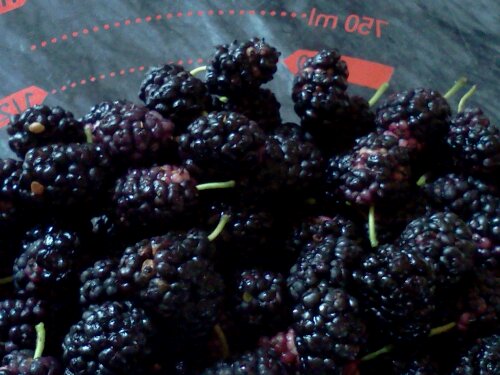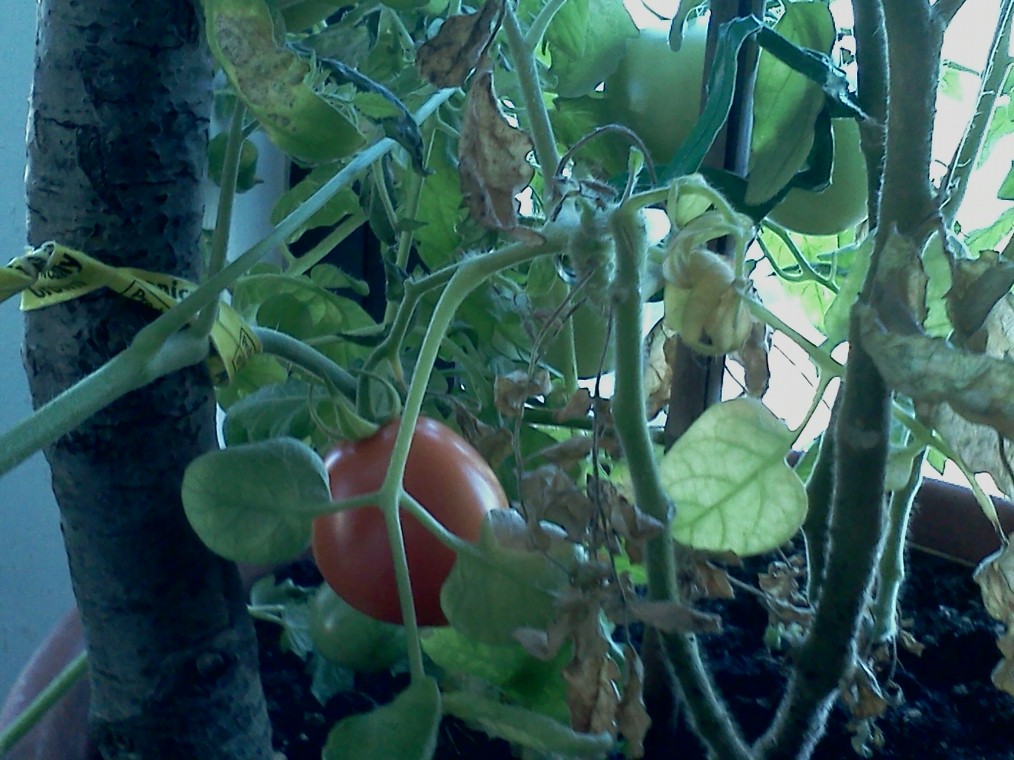 The tomatoes in my living room are doing beautifully. Right now, I have 4-6 little ones ripening beautifully and several more yellow flowers on the vines. My garlic is growing in a hanging basket of herbs. My basil, both green and red, is healthy and strong and in fact, I’ve lately noticed that it’s surrounded by a whole host of little baby basil plants. In the patches of empty spaces of my windowsill gardens, I’ve planted chili peppers from seeds I pulled from a red and green jalapeno I got from a CSA share. All and all I’m pretty pleased with my indoor garden.
The tomatoes in my living room are doing beautifully. Right now, I have 4-6 little ones ripening beautifully and several more yellow flowers on the vines. My garlic is growing in a hanging basket of herbs. My basil, both green and red, is healthy and strong and in fact, I’ve lately noticed that it’s surrounded by a whole host of little baby basil plants. In the patches of empty spaces of my windowsill gardens, I’ve planted chili peppers from seeds I pulled from a red and green jalapeno I got from a CSA share. All and all I’m pretty pleased with my indoor garden.
When I first decided to eat local in a more regimented way, I was worried about tomatoes. I’ve been toying with the idea of hydroponicsfor a few years.And when I’d heard about Windowfarms a few months ago, I thought it sounded pretty interesting and a good way to try my hand at hydroponic gardening. But I never managed to get it together to find the instructions, get a bunch of bottles, or figure out what else I needed to make the Windowfarms from scratch. Apparently I’m not alone.
Windowfarms is a hydroponic system, inspired by a NASA design for hydroponic gardens in space. It’s the brainchild of Britta Riley, who founded Windowfarms in 2009 as an open source community art project inspired by Michael Pollan and Clay Shirky. In just a few short years, the project has grown to include a broad range of designers, engineers, socially-minded business people, and of course the worldwide community of 22,000+ Windowfarmers.
Windowfarms let you grow fresh vegetables at home by taking advantage of natural light and climate control indoors. The roots are bathed in nutrients from the sea, preventing food plants from getting root bound (as they do in traditional soil filled containers). According to their Kickstarter info, you get healthier roots, and fresher, more nutritious vegetables without dirt. It all sounds can grow all the things I grow in my window boxes, but apparently, there are some people who are growing strawberries – year round.
I don’t buy strawberries much. Conventional strawberries are often reported to have a ton of toxins on them. Check out What’s On My Food if you want to know the dirty details. Local organic strawberries are often prohibitively expensive. I buy them once in a while and occasionally they come in the CSA, but it’s a rarity. So, we eat a paltry amount of the berries.
Strawberries, like many berries are incredibly nutritious and very low in calories. It’s a good combo to begin with. And of course, fresh strawberries are really delicious. The idea of growing strawberries, all winter long, well, that basically sold me. Sure I’ll grow lettuce and arugula, but I definitely plan to have a whole farm dedicated to strawberries.
I ordered my Windowfarm through Kickstarter. And if you order before the 30th you can get a discount on a farm. But, even more importantly you could help to make sure the farms are produced locally.
The project has met its goal of 500 backers, which means they will have enough money to create the molds. But if they can get 2000 backers, they will be able to get the Windowfarms produced here in the US.
Last but not least, did I mention, the design is beautiful. I might actually hang them in the boy’s rooms. The initial design was based on hydroponic garden designs developed by NASA and the final product looks pretty space age and cool. I may even end up hanging them in each of the B and Z bedrooms. Then, not only canmy strawberry producing beauties cut down our carbon footprint and bring us fresh fruit all winter, but they can also help filter toxins from the air my children sleep in. All and all, the whole thing is pretty sweet.
Windowfarms Links
• Britta’s awesome talk talk on R&DIYon TED:
• The Windowfarm community (I joined!)
• How to get your Windowfarm through Kickstarter. (Hurry, deadline is tomorrow. Yikes!)
